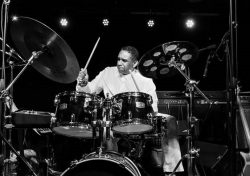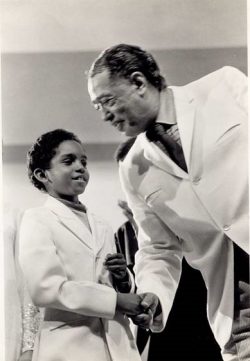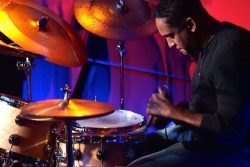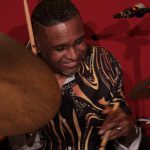Beyond Jazz: Ronnie Burrage’s Brooklyn Odyssey
“I started making music since coming out my mother’s womb,” venerable jazz musician Ronnie Burrage tells Brooklyn Roads. He adds that he grew up in “a very healthy home and community where all genres of African American, Indigenous American, African, European and East Asian music were played, heard and explored.”
As a result, jazz, funk, and R&B became “primary source[s] of inspiration as a percussionist.” Although closely associated with playing jazz, Burrage says the music he creates “is more than a genre…it is visual, experiential, honest, educational, and soulful all mixed up with jazz, funk, spiritual, rock, and symphonic sensibilities. My compositions are full of harmonies heard from European symphonic music and jazz.”
The feeling he endeavors to give listeners is “like the mystery of sounds from Thelonious Monk, Duke Ellington, Sun Ra, Stravinsky and Gorecki,” he tells Brooklyn Roads, adding that, “The ability to create polyrhythmic pieces and rhythms from developing my limbs to play independently of one another is also embedded in my music.”
Burrage also tells us that he is constantly writing new sounds and working on orchestrating scores. “I have music for a 30-piece configuration that includes, strings, big band, both symphonic and world percussion, choir, and a core sextet jazz ensemble.”
 Two local venues that are close to his heart are Brooklyn College, where he serves as an adjunct lecturer, and Brooklyn Academy of Music (BAM). The former, he says, “has an incredible performing arts center with beautifully acoustically sound theaters.” Regarding BAM: “I played there years ago and am delighted that I will be playing there with the great Archie Shepp this spring.”
Two local venues that are close to his heart are Brooklyn College, where he serves as an adjunct lecturer, and Brooklyn Academy of Music (BAM). The former, he says, “has an incredible performing arts center with beautifully acoustically sound theaters.” Regarding BAM: “I played there years ago and am delighted that I will be playing there with the great Archie Shepp this spring.”
Among Burrage’s crowning achievements is the creation of the World Rhythm Academy (WRA), which aims to provide “a productive and positive solution” for creating “a better, more humane world through the arts [and] sciences.” It takes artists, musicians, and educators into underserved communities to “collaborate with local architects, builders and construction companies [to] build a workable structure to house WRA activities.”



